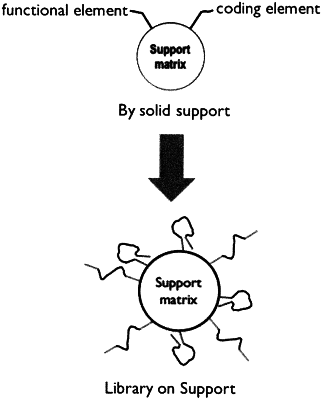|
1. An oligonucleotide construct comprising a functional element and a coding element, wherein the functional element comprises a functional sequence, the functional sequence comprising a sequence of nucleotides in which one or more, or each, nucleotide is modified and the coding element comprises a coding sequence, the coding sequence comprising a sequence of nucleotides which do not contain the modifications of the functional sequence, wherein the coding sequence encodes the sequence structure of the functional sequence and wherein the coding sequence is an oligonucleotide polymer of n-mers, or a plurality of different n-mers, where n is an integer of 2 or greater and each n-mer corresponds to a single nucleotide in the functional sequence and the coding sequence has n times the number of nucleotides as the functional sequence.
|
